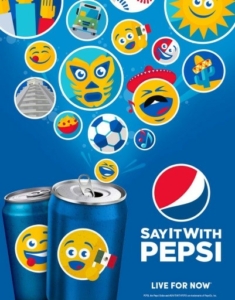Wink face, smiley face, crying face, the dancer, the cyclist, the cat, the moon, and, of course, the avocado. There are emojis for just about everything these days, but why? This blog post explores why 92% of the online population use emojis and whether they help, or harm, our efforts to communicate with each other.
What are the main uses for emojis?

Some recent emoji usage of my own can help us here:
- Sending a *running man* in a group conversation to let my friends know I was running late
- Captioning an Instagram post of my cat with a *smiling cat* emoji
- Sending the *umbrella* and *frowning face* emoji to let my mum know the weather had become worse
Non-emoji-users may wonder why they’re necessary – I could have just as easily sent my mum a message saying, ‘it’s raining, bring an umbrella’ – but I think there are four main reasons why people choose to include colourful digital icons within messages.
- To introduce sarcasm or humour to lighten the mood
Text-only messages can seem cold and emotionless. Most of us have sent a message which was meant to be a joke but the recipient interpreted it quite differently. This is especially the case with sarcastic comments, e.g. ‘why would I want to come to your house for dinner, you’re a terrible cook.’ Obviously, it depends how strong your relationship with someone is, but an emoji would certainly help to clarify this if there were any uncertainty. If the sender includes the *crying laughing face*, *wink face* or *sarcastic rolling eyes* emoji at the end of message, it instantly lightens the tone of the message.
- To communicate when words fail us
Emojis can be more than just cute or fun in a message; they can also be used to help make the meaning clear or stand in place of words when we can’t think quite how to say something.
An old school-friend of mine recently shared some devastating news on Facebook. What followed was an avalanche of comments, of which 80% included an emoji. In fact, some comments only included emojis, no words at all. It was clear some people just didn’t know what to say in the circumstances or didn’t feel they had the right words to comfort her. Instead, there were lots of *heart*, *kissing face* and *sad face* emojis. This let them send their condolences without agonising over the wording.
- Your personal ‘tone of voice’
If you’re a positive or negative person, emojis can help to express your personality in your messages. For example, a text-only message may seem too bland and unenthusiastic for a particularly vibrant character. Solution: add the *thumbs up* or *huge grin face*. Problem solved!
Science supports this theory since it was discovered that looking at a smiley face online activates the same parts of the brain as looking at a human face. Just as we do in real life, we tend to alter our facial expressions and/mood to match the emotion of the emoji[1].
- Because other people are…
Finally, I think the use of emojis is spreading like wildfire because people tend to follow where others lead. I was recently involved in a text exchange with a friend who seems to use every emoji under the sun and found myself adding the *Easter chick* whilst talking about the bank holiday, and even the *pig* to imply that I’d overeaten. *rolling eyes face*
Is there a place for emojis in business?

Controversially, emojis are not just limited to personal use; in fact, many businesses/business people no longer consider them frivolous and have, instead, embraced emojis for marketing campaigns or sales techniques. Examples include:
|
||
|
 |
|
|
 |
|
Julie also took part in the world’s first political emoji interview which saw her describe global current affairs using some of our favourite icons.
A quick survey in the office here shows there are wildly divergent views about whether there’s a place for an emoji in business emails. However, we’ve settled on some simple guidelines:
- Never use an emoji in an introductory email.
- Don’t use emojis to make a joke out of an issue that should be addressed properly, e.g. “Late again this morning, Anderson? *wink face*”.
- If you’re considering adding an emoji to make sure something is not taken badly, stop and reconsider if you should be saying it at all.
- Don’t use an emoji in an email to a client – you never know who they might need to share it with inside their business.
- Don’t use emojis unless you already have a good relationship with the recipient and you are confident it will be well received.
*Thumbs up* or *thumbs down* to the emoji


Considering an estimated six billion emojis are sent each day[4], it’s clear they have become an integral part of everyday communication. In some situations, words are being replaced by emojis e.g. Instagram allows users to hashtag using emojis and Domino’s has adapted to the *pizza*.
Of course, there will always be people who think emojis have gone too far; I mean, is there really any need for *floppy disk* these days? However, emojis are here to stay and you’ll likely find them creeping further into marketing campaigns and even other business communications as the years go by. So, why not become familiar with the 1,851 emoji characters currently available and see whether you can spice up your messages?
[1] https://thenextweb.com/insider/2015/06/23/the-psychology-of-emojis/#.tnw_WF2AsZZM
[2] https://www.tatango.com/blog/how-it-works-text-message-a-pizza-emoji-to-order-dominos/
[3] http://creativity-online.com/work/pepsi-pepsimoji-key-visuals/46795
[4] https://www.emarketer.com/Article/Who-Needs-Words-You-Have-Emojis/1012466
